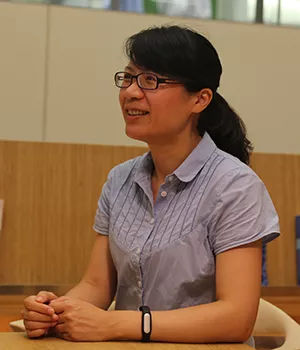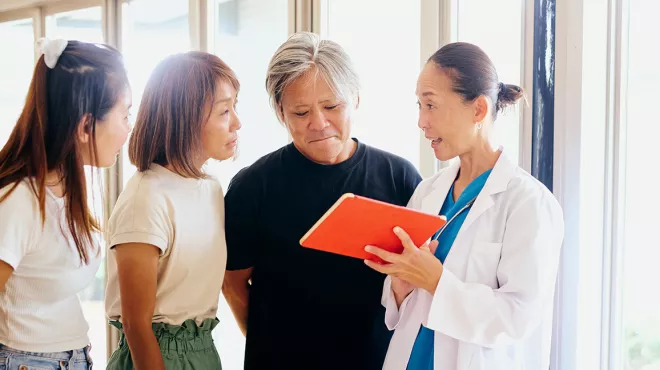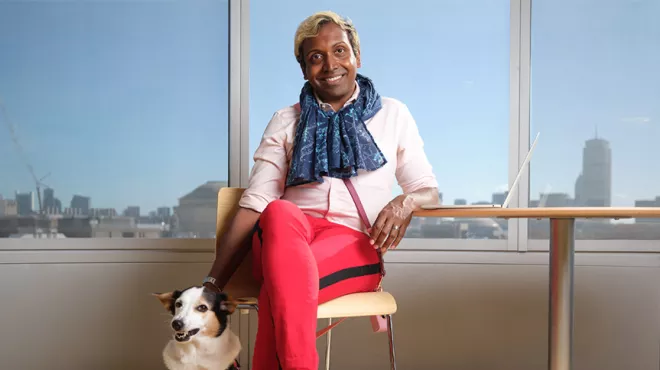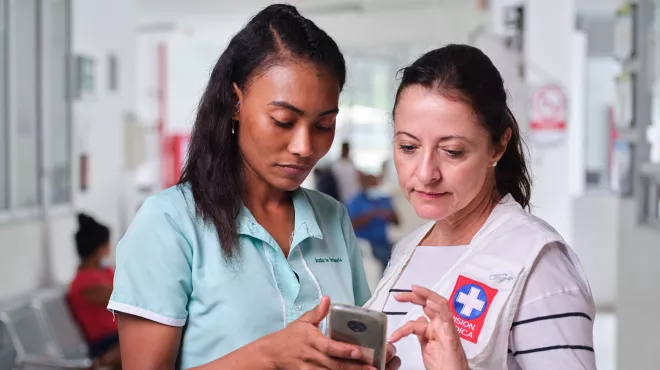It was a Friday afternoon in northern China in the 1980s. Vicky Qi was with her mother in an open market when a young mother spotted them in the crowd. Without hesitation, she came forward to greet them. Vicky’s mother, a gynecologist, had helped deliver her little boy, who was about to celebrate his first birthday.
Qi, now a biologist at Novartis, remembers the face of the young mother—open and amicable at first. As the conversation continued, the woman’s face began to register anxiety: her little son had been crying a lot these days. An unofficial medical consultation started, with Qi’s mother asking what the baby ate, if he slept enough, etc. She offered some initial advice and promised to get back to the young mother with additional information after checking her medical textbooks.

Encounters of this kind were common in Qi’s childhood. “It almost always took longer than expected to grocery shop,” she recalls. “But I was proud of my mother.”
An eyewitness, Qi was fascinated with the idea of being able to help others. In college, she chose to study biology, hoping to eventually make discoveries that would contribute to human health. Now a drug discovery team leader at the Novartis Institutes for BioMedical Research (NIBR), Qi is closer than ever before to achieving her goal. A compound discovered by her team in Shanghai, NIBR’s base in Asia, recently entered clinical trials for several types of cancer.
Looking back at the last few years, Qi realizes that she is getting closer to the person that she’s always wanted to be. Not a witness this time, but a participant in an important discovery, shouldering increasing responsibility along the way. Below is an excerpt from an interview with Qi about her journey as a scientist.
When did you decide to work in drug discovery?
Initially, I gravitated toward academic research, hoping to make contributions to a growing body of biomedical knowledge. When I finished my studies in the U.S., I came back to China for personal reasons. I heard that Novartis was establishing a new R&D center in Shanghai and did some research. I had previously attended a seminar with Dr. En Li, Head of NIBR Shanghai. I was intrigued by this new world where basic, curiosity-driven research and drug discovery came together. I also felt a connection to patients. I had experienced the feeling of losing someone I loved, a good friend, to cancer. I decided to make a change and dedicate myself to translating basic research findings to discoveries with tangible clinical value.
Your team’s molecule recently entered the clinic. When did you begin working on the project and what was your role?
I joined NIBR Shanghai in 2008 and it was my first project. The goal was to tackle cancers through epigenetic targets. Initially, I worked as a pure biologist. As we zeroed in on a particular target and moved into the drug discovery phase of the project, my role expanded. Chemists, biochemists, structural biologists and other experts joined the team, and I realized that I needed to drive discussions between them to address key scientific questions. I was the glue holding everyone together. I was also a cheerleader, energizing the team through ups and downs.
Did your experiences with your mother’s patients and your friend with cancer influence how you approached the project?
In my opinion, a drug discovery team should always remember the patients that they are working to help. Patients with B-cell lymphoma are commonly prescribed combination therapy. We brought this clinical perspective to the project from the beginning, recognizing that our experimental treatment might eventually be administered in combination with other therapies. When we had finally optimized a compound, we began testing it in combination with other compounds in the lab, potentially setting the stage for future clinical trials. To me, this “from patients, for patients” mindset is what a drug discovery team should have.
Aside from your mother, who is your greatest role model?
Professor Hongtao Yu, my PhD supervisor at the University of Texas Southwestern Medical Center. To my knowledge, he was the only associate professor who still kept his own bench in the lab. Whenever he got an exciting idea, he would put on his lab coat and goggles, sit down at the bench, and start to experiment as if it were his first day in the lab. A “doer,” he never lost the yearning to explore and figure things out. If a hypothesis failed, he didn’t get frustrated. He simply tried to figure out why it had failed and if there was a different way to address the hypothesis. Or he’d work to figure out an alternative hypothesis.
Did you encounter failure or obstacles when working on your project?
After we identified several compounds that hit the target, we started looking for ways to improve their quality. But we got stuck. We had trouble optimizing the initial set of compounds. For six months or so we were at a crossroads, shrouded in doubt, wondering: do we really have a chance at this? The team didn't quit. Our chemists worked really hard and took a closer look at the binding pocket of the target. Finally, we made a breakthrough, starting a new chapter in the project. Now we’re anxious to see if the compound that resulted from our research works in patients.



